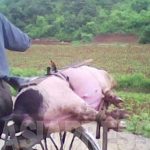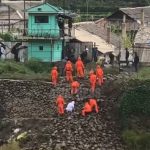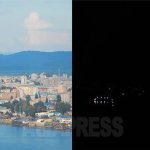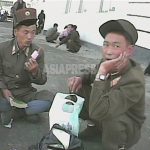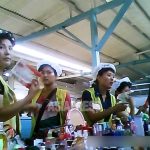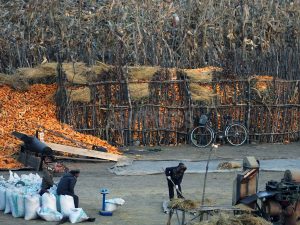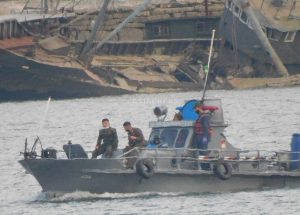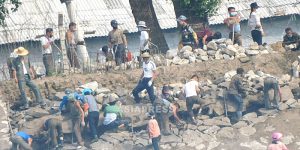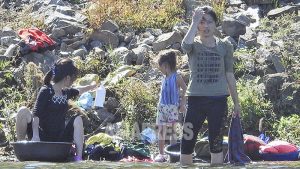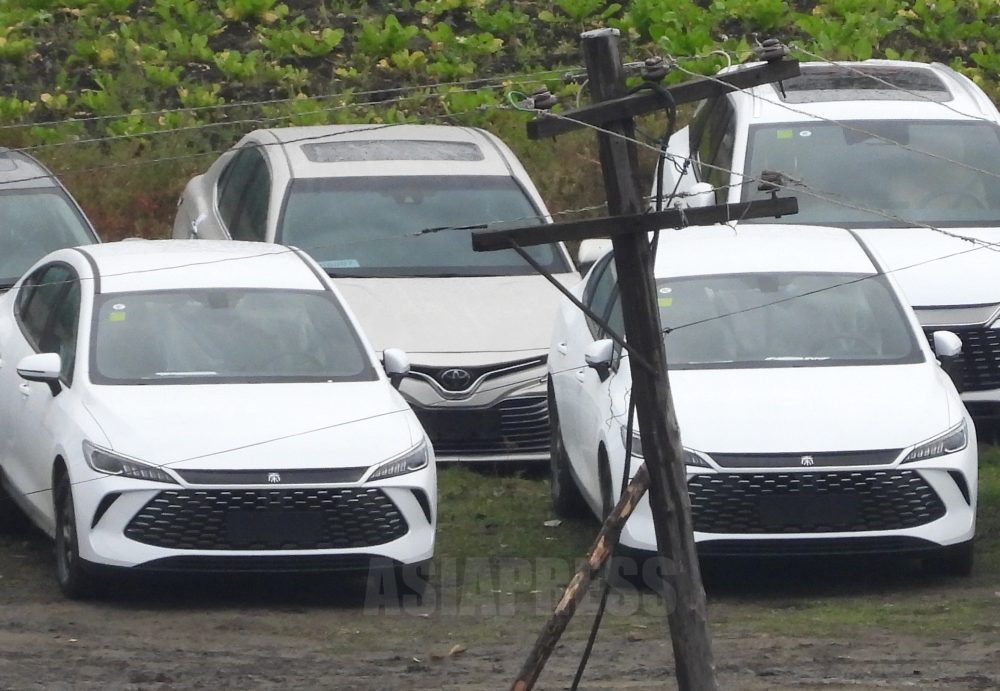
Last September, the ASIAPRESS reporting team witnessed an unprecedented scene in Changbai County, China, across from Hyesan in North Korea's Ryanggang Province. Across the Yalu River, throughout Hyesan's downtown area, large quantities of luxury sedans, large trucks, heavy construction equipment, and other Chinese used vehicles were parked in orderly fashion. They were smuggled vehicles.
What is the background behind the massive influx of vehicles into North Korea? And exactly what structure and methods enable this large-scale smuggling? Investigation with reporting partners on both the North Korean and Chinese sides has revealed the structure and aspects of changes in North Korea's economic policy. (JEON Sung-jun / Kang Jiwon)
◆ From BYD to Toyota... Hundreds of Vehicles Confirmed by Naked Eye
Among the large number of parked vehicles were luxury sedans, including BYD, China's leading electric vehicle brand, and Japanese Toyota, as well as large trucks and construction heavy equipment. All had their license plates removed.
Reporting partners residing in Hyesan confirmed that "these are Chinese used cars smuggled by the Ministry of External Economic Affairs and foreign trade companies."
A trade official from Jilin Province, well-versed in border smuggling, reported the following in mid-September:
"Vehicle exports have been concentrated since August, and I heard that dozens of tractors crossed over in early September. Among sedans, used BYD vehicles are being traded."
Vehicle parts (tires, suspensions, wheels, etc.) are also smuggled together with the vehicles.
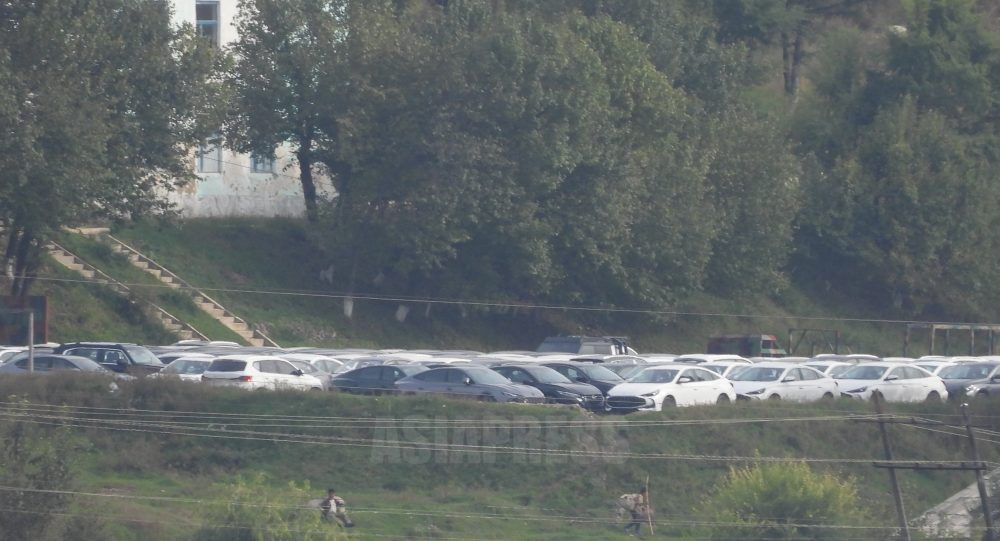
◆ 'State Smuggling': North Korea's Survival Strategy to Circumvent Sanctions
To understand the structure of vehicle smuggling, one must first grasp the ironically named concept of 'state smuggling.'
Since 2017, when powerful UN and international sanctions were added in response to continued nuclear tests and missile launches, the North Korean government has conducted smuggling trade through the North Korea-China border to secure materials needed for state operations while circumventing sanctions. This is called 'state smuggling.'
'State smuggling,' carried out under the leadership of North Korean government agencies, cooperation of Chinese private smugglers, and tacit approval of Chinese authorities, has been one of the means to detect trends in North Korea-China relations.
With Kim Jong-un's visit to China this year as a turning point, the North Korea-China border is heating up again with state smuggling. Vehicle smuggling is at the center of this.
◆ Hyesan, the Center of Vehicle Smuggling

The hub of state smuggling is the Yellow Sea maritime area and Hyesan, which faces Changbai County in China's Jilin Province. Most vehicle smuggling is conducted through Hyesan because this city is located upstream of the Yalu River, the natural boundary between North Korea and China.
In winter, ice roads are used, but normally, points where the Yalu River water level is low are selected, and vehicles move with wheels submerged halfway in water.
According to reporting partners in mid-October, the specific smuggling locations are near Kimhyongjik County and Goeup, located slightly downstream from Hyesan.
◆ The Key to Vehicle Smuggling: Intermediary Networks
Intermediary networks are crucial in vehicle smuggling. A Jilin Province trade official well-versed in Changbai County's trade situation told ASIAPRESS in late September that Chinese vehicle smuggling brokers are mainly entrepreneurs from Shenyang or Changchun, who prepare goods based on the models and specifications of vehicles ordered by the North Korean side.
On the North Korean side, trading companies commissioned by state agencies (Ministry of External Economic Affairs) bring in goods under the supervision of the State Security Department (secret police), customs, and provincial trade management bureaus.
Recently, evidence has emerged of moneyed individuals (donju) colluding with trading companies under the banner of 'state smuggling.' A Hyesan reporting partner reported:
"Individuals don't do it directly, but donju are financing imports by colluding with trading companies. While donju sometimes own them directly, most vehicles are used by enterprises and trading companies."
◆ A Living Scene of North Korea's Economy
The current boom in used car smuggling in the North Korea-China border region is a living cross-section of North Korean society where state control, market demand, and corruption are intricately intertwined.
North Korea abruptly permitted private vehicle ownership early this year. This was a major decision for North Korean authorities, who had been restricting individual transactions and strengthening state control following the COVID-19 pandemic.
According to information from reporting partners, vehicles in North Korea have become more than mere transportation—they're symbols of wealth and new business opportunities. Taxis and North Korean-style car rental businesses have rapidly emerged as new revenue sources, further amplifying vehicle demand.
In the next installment, we will examine in detail what types of vehicles are crossing over and for what purposes, through photos of smuggled vehicles taken with telephoto cameras from the border area. (To be continued >>)
*ASIAPRESS maintains contact by bringing Chinese mobile phones into North Korea.

- <Ultra-Telephoto Footage> Bridge Construction Between N. Korea and Russia Progressing Steadily - Dump Trucks, Cranes... Chinese Heavy Equipment in Action
- <Inside N. Korea> Mass outbreak of severe diarrhea and colitis patients from tap water - Authorities respond with large amounts of disinfectant, but "smell too strong to drink" in Hyesan
- 'Russian deployment heroes’ stained with youth's blood (1) Creating a ‘new hero’ myth through propaganda
- <Super-telephoto Lens Report> One Year After Floods, What Does the Site Look Like Now? (1) Rows of New Apartments... But Look Closely and Tiles Are Already Falling Off (10 Photos)
- <Inside N. Korea>Continuing to Heroize Russian Deployment War Dead with Propaganda... Videos Have Significant Effect: "Some People Cry Along with Kim Jong-un's Tears”
